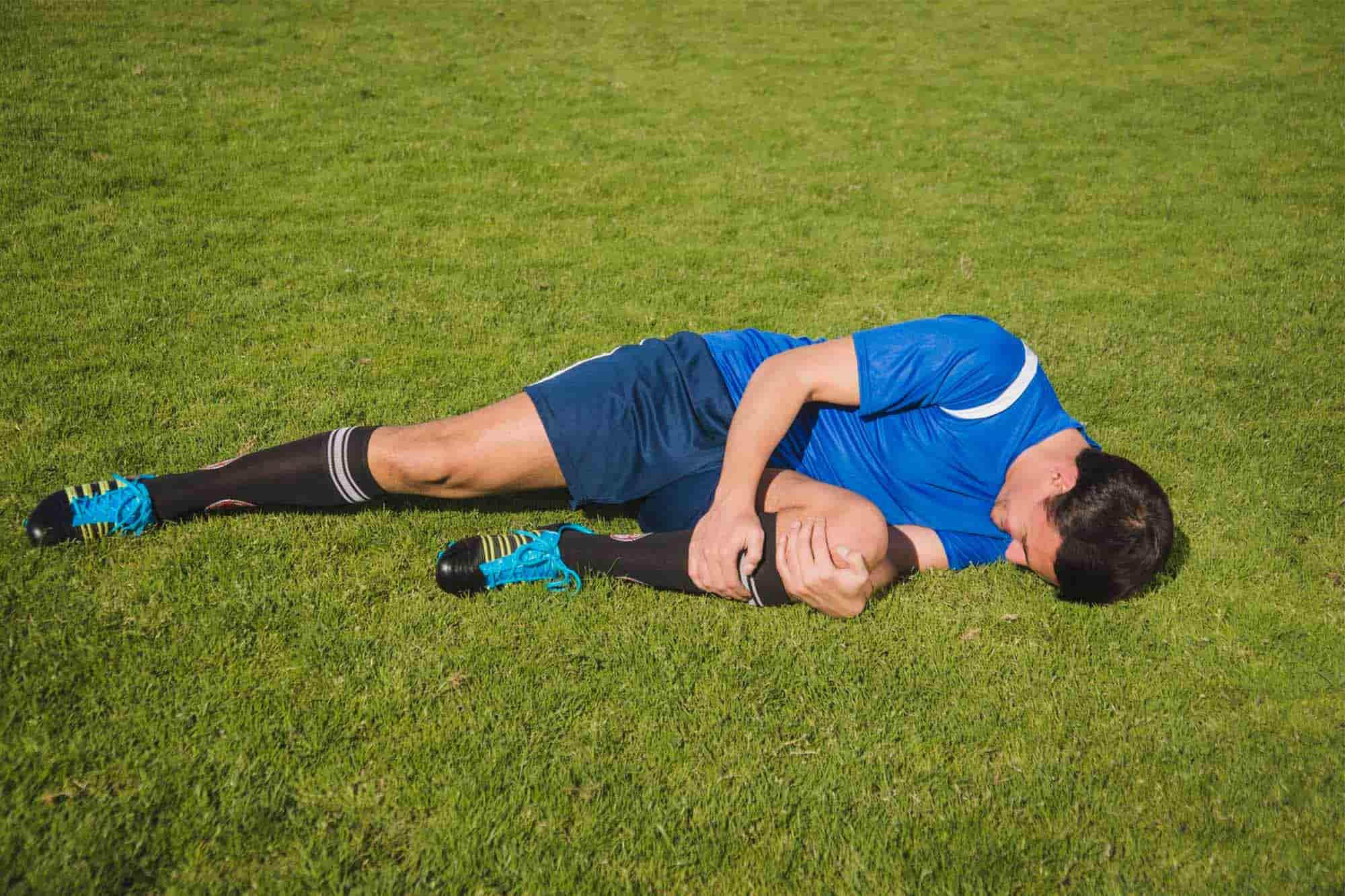
Sports injuries are injuries that happen while playing sports or training . They can occur to muscles, bones, joints, or tissues like tendons and ligaments. Common sports injuries include sprains, strains, fractures, ligaments tear and dislocations. These injuries can happen due to accidents, overuse, or poor training techniques. Proper warm-up, stretching, wearing protective gear, and using correct techniques can help prevent sports injuries. Treatment may include rest, ice, compression, elevation (RICE), physical therapy, or surgery in severe cases. It’s important to listen to your body, take breaks when needed, and seek medical attention if you’re injured to prevent further damage.
Sports injuries are a common occurrence among athletes of all levels, from amateurs to professionals. Whether you’re a weekend warrior or a seasoned competitor, understanding the most prevalent types of sports injuries can help you prevent them and seek appropriate treatment when needed. In this blog post, we’ll explore some of the most common sports injuries, along with tips for prevention and treatment.
1. Sprains and Strains
Sprains and strains are among the most common sports injuries, affecting muscles, ligaments, and tendons. A sprain occurs when a ligament is stretched or torn, while a strain involves damage to a muscle or tendon. These injuries often result from sudden movements, overexertion, or inadequate warm-up.
Prevention: Proper warm-up and stretching routines, wearing supportive footwear, and using proper technique during physical activity can help prevent sprains and strains.
Treatment: Rest, ice, compression, and elevation (RICE) are commonly recommended for initial treatment. Physical therapy and gradual rehabilitation exercises may be necessary for full recovery.
2. Knee Injuries
The knee is a complex joint that is vulnerable to various injuries, including ligament tears (such as ACL tears), meniscus tears, and patellar tendonitis. These injuries are frequently seen in sports that involve jumping, pivoting, or sudden changes in direction, such as basketball, soccer, and skiing.
Prevention: Strengthening the muscles surrounding the knee, using proper landing and cutting techniques, and wearing protective gear can reduce the risk of knee injuries.
Treatment: Treatment for knee injuries may include rest, physical therapy, bracing, and in severe cases, surgery to repair or reconstruct damaged ligaments or tendons.
3. Shoulder Injuries
Shoulder injuries, such as rotator cuff tears, shoulder dislocations, and shoulder impingement syndrome, are common in sports that require repetitive overhead motions, such as swimming, tennis, and baseball. These injuries can result from overuse, trauma, or poor biomechanics.
Prevention: Proper warm-up and cooldown routines, strengthening the muscles surrounding the shoulder joint, and using correct technique when performing overhead movements can help prevent shoulder injuries.
Treatment: Treatment options may include rest, physical therapy, anti-inflammatory medications, and in some cases, surgical intervention to repair damaged tissues.
4. Ankle Sprains
Ankle sprains are a prevalent sports injury, particularly in activities that involve running, jumping, and sudden changes in direction, such as basketball, soccer, and volleyball. Ankle sprains occur when the ligaments surrounding the ankle are stretched or torn, often due to twisting or rolling the ankle.
Prevention: Wearing supportive footwear, taping or bracing the ankles for added stability, and performing balance and proprioception exercises can reduce the risk of ankle sprains.
Treatment: Treatment for ankle sprains typically involves rest, ice, compression, and elevation, followed by rehabilitation exercises to restore strength and mobility.
5. Stress Fractures
Stress fractures are small cracks or fissures in the bone that develop gradually over time due to repetitive impact or overuse. These injuries commonly affect the lower leg, feet, and shins and are often seen in runners, dancers, and athletes involved in high-impact sports.
Prevention: Gradually increasing training intensity and duration, wearing proper footwear, and incorporating cross-training activities can help prevent stress fractures.
Treatment: Treatment for stress fractures usually involves rest, immobilization, and gradually resuming activity once the bone has healed.
In conclusion, sports injuries are an inherent risk of physical activity, but understanding their causes, prevention strategies, and treatment options can help athletes stay healthy and perform at their best. By incorporating proper warm-up and cooldown routines, using correct technique, wearing appropriate protective gear, and listening to your body’s signals, you can minimize the risk of injury and enjoy the benefits of sports participation safely. If you do experience a sports injury, seek prompt medical attention and follow your healthcare provider’s recommendations for recovery. Remember, prevention is key, but knowing how to address injuries when they occur is equally important for long-term athletic success and well-being.
1. What are the best ways to prevent sprains and strains during sports activities?
To prevent sprains and strains, it’s essential to incorporate proper warm-up and stretching routines before physical activity. Additionally, wearing supportive footwear and using correct technique during exercise can help reduce the risk of these injuries.
2. How can I lower my risk of knee injuries while playing sports like basketball or soccer?
Strengthening the muscles around the knee joint is crucial for reducing the risk of knee injuries. Moreover, practicing proper landing and cutting techniques, as well as wearing protective gear, can help protect the knees during activities involving jumping, pivoting, or sudden changes in direction.
3. What are some effective methods for preventing shoulder injuries in sports like swimming or tennis?
To prevent shoulder injuries, it’s important to implement proper warm-up and cooldown routines, strengthen the muscles surrounding the shoulder joint, and ensure correct technique when performing overhead movements.
4. How can I minimize the likelihood of ankle sprains while participating in sports like basketball or volleyball?
Wearing supportive footwear, utilizing ankle taping or bracing for added stability, and incorporating balance and proprioception exercises into your routine can help lower the risk of ankle sprains. These precautions are especially important in activities involving running, jumping, and sudden changes in direction.
5. What steps can I take to avoid stress fractures, particularly if I’m an avid runner?
Gradually increasing training intensity and duration, wearing appropriate footwear designed for your activity, and diversifying your workout routine with cross-training activities are effective ways to prevent stress fractures. It’s important to listen to your body and avoid overtraining to reduce the risk of developing these injuries.
GET APPOINTMENT
Schedule Appointment : Your Path to Specialized Care
Get rid of your pain, stress, and enduring with our 24/7 dental services. It's a priority to relieve the pain in surgeon as much as possible. 90% of customers claim that they would come back & recommend us to others.
